
Key West is an island in the Straits of Florida, within the U.S. state of Florida. Together with all or parts of the separate islands of Dredgers Key, Fleming Key, Sunset Key, and the northern part of Stock Island, it constitutes the City of Key West.
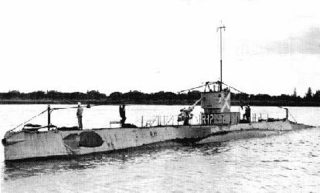
USS R-12 (SS-89) was an R-class coastal and harbor defense submarine of the United States Navy.

The Naval Undersea Warfare Center (NUWC) is the United States Navy's full-spectrum research, development, test and evaluation, engineering and fleet support center for submarines, autonomous underwater systems, and offensive and defensive weapons systems associated with undersea warfare. It is one of the corporate laboratories of the Naval Sea Systems Command. NUWC is headquartered in Newport, Rhode Island and has two major subordinate activities: Division Newport and Division Keyport in Keyport, Washington. NUWC also controls the Fox Island facility and Gould Island. It employs more than 4,400 civilian and military personnel, with budgets over $1 billion.

Big Coppitt Key is an island in Monroe County, Florida, United States, in the lower Florida Keys. The name is said to be a derivation of the old English word "coppice", meaning thicket. According to A.D. Bache, in the notes for his coast survey conducted in 1861, this key was the location of Happy Jack's plantation in 1855.

USS Picuda (SS-382), a Balao-class submarine, was originally named Obispo, making her the only ship of the United States Navy to be named for the obispo, a spotted sting ray.
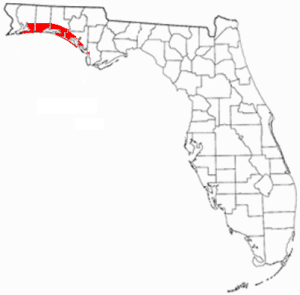
The Emerald Coast is an unofficial name for the coastal area in the US state of Florida on the Gulf of Mexico that stretches about 100 miles (160 km) through five counties, Escambia, Santa Rosa, Okaloosa, Walton, and Bay, which include Pensacola Beach, Navarre Beach, Fort Walton Beach, Destin, and Panama City Beach. Some south Alabama communities on the coast of Baldwin County, such as Gulf Shores, Orange Beach, and Fort Morgan embrace the term as well.
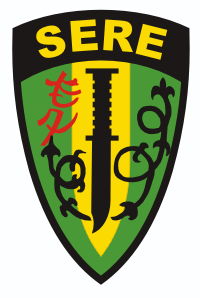
Survival, Evasion, Resistance, and Escape (SERE) is a training concept originally developed by the British during World War II. It is best known by its military acronym and prepares a range of Western forces to survive when evading or being captured. Initially focused on survival skills and evading capture, the curriculum was designed to equip military personnel, particularly pilots, with the necessary skills to survive in hostile environments. The program emphasised the importance of adhering to the military code of conduct and developing techniques for escape from captivity. Following the foundation laid by the British, the U.S. Air Force formally established its own SERE program at the end of World War II and the start of the Cold War. This program was extended to include the Navy and United States Marine Corps and was consolidated within the Air Force during the Korean War (1950–1953) with a greater focus on "resistance training."
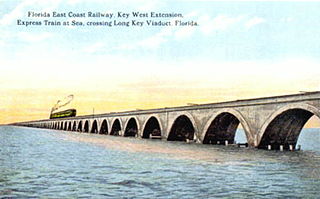
The Overseas Railroad was an extension of the Florida East Coast Railway to Key West, a city located 128 miles (206 km) beyond the end of the Florida peninsula. Work on the line started in 1905 and it operated from 1912 to 1935, when it was partially destroyed by the Labor Day Hurricane. Some of the remaining infrastructure was used for the Overseas Highway.

Naval Base Ventura County (NBVC) is a United States Navy base in Ventura County, California. Formed by the merger of NAS Point Mugu and CBC Port Hueneme, NBVC is a diverse installation composed of three main locations — Point Mugu, Port Hueneme, and San Nicolas Island. The base serves as an all-in-one mobilization site, deep water port, railhead, and airfield. NBVC supports more than 100 tenant commands with a base population of more than 19,000 personnel, making it the largest employer in Ventura County.

United States Coast Guard Training Center Cape May (TRACENCM) is the home of the Coast Guard enlisted corps and is the Coast Guard's only enlisted accession point and recruit training center. It is located at 1 Munro Avenue, Cape May, New Jersey.

Naval Amphibious Base Coronado is a US naval installation in San Diego, California. The base, situated on Silver Strand between San Diego Bay and the Pacific Ocean, is a major United States Navy shore command, supporting over 30 tenant commands, and is the West Coast focal point for special and expeditionary warfare training and operations. The on‑base population is 5,000 military personnel and 7,000 students and reservists. The base is one of the eight components of Naval Base Coronado (NBC).

Naval Air Station Key West, is a naval air station and military airport located on Boca Chica Key, four miles (6 km) east of the central business district of Key West, Florida, United States.
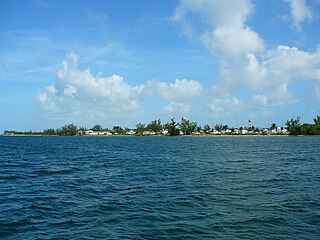
Sigsbee Park, also known as Dredgers Key, is an island about half a mile (800 m) north of Key West island in the lower Florida Keys; administratively it is within the City of Key West, Florida, United States.
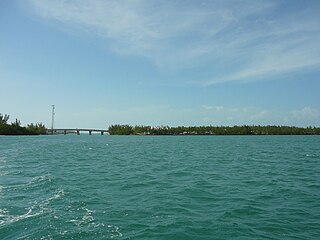
Fleming Key is an island off the northwest corner of the island of Key West, Florida in the lower Florida Keys. It is roughly 2 miles (3.2 km) long by 0.25 miles (400 m) wide.

Naval Base Coronado (NBC) is a consolidated Navy installation encompassing eight military facilities stretching from San Clemente Island, located 70 miles west of San Diego, California, in Los Angeles County, California, to Mountain Warfare Training Camp Michael Monsoor and Camp Morena, located 60 miles east of San Diego.
USS Spoonbill (AMS/MSC-202) was a Bluebird-class minesweeper acquired by the US Navy for clearing coastal minefields.

The United States Navy (USN) is the maritime service branch of the United States Armed Forces and one of the eight uniformed services of the United States. It is the world's most powerful navy and the largest by displacement, at 4.5 million tons in 2021. It has the world's largest aircraft carrier fleet, with 11 in service, one undergoing trials, two new carriers under construction, and six other carriers planned as of 2024. With 336,978 personnel on active duty and 101,583 in the Ready Reserve, the U.S. Navy is the third largest of the United States military service branches in terms of personnel. It has 299 deployable combat vessels and about 4,012 operational aircraft as of July 18, 2023.

The third USS Despatch was a United States Navy steamer in commission from 1873 to 1891.

USAMP Major General Wallace F. Randolph, sometimes also known as MG Wallace F. Randolph, was a 188.2-foot (57.4 m) mine planter built by the Marietta Manufacturing Company, and delivered to the United States Army Mine Planter Service in 1942. The ship was transferred to the U.S. Navy in 1951, placed directly into the Atlantic Reserve Fleet without being commissioned classed as the auxiliary minelayer ACM-15, then reclassified minelayer, auxiliary (MMA) and named MMA-15, and finally given the name Nausett without any active naval service. After being stricken from the Naval Vessel Register, the ship was transferred to different owners, and eventually was scuttled off the coast of Florida as an artificial reef and fish aggregating device. The site is currently known as the Thunderbolt Wreck, and is considered to be an excellent and challenging dive site for advanced divers.

USS Ruchamkin (APD-89), ex-DE-228, later LPR-89, was a United States Navy high-speed transport in commission from 1945 to 1946, from 1951 to 1957, and from 1961 to 1969. She subsequently served as ARC Córdoba in the Colombian Navy, until 1980; although scrapped, her hull and superstructure were re-erected in a leisure park near Bogotá.



















